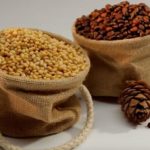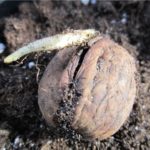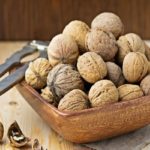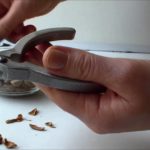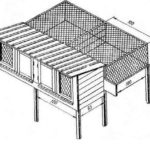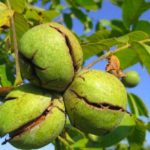The design for harvesting pine nuts has a standard name - huller. This device reduces the time spent preparing the product. Peelers are widely used in large-scale production. You can make such a unit yourself at home. Steel structures are heavy, but to lighten the weight, home appliances are made from aluminum sheets.
Why are cone crushers needed?
Pine nuts are collected in the taiga and brought from Siberian forests. Nuts contain valuable microelements, oils and amino acids.In addition, pine nuts are tasty on their own, so the product is in high demand on the market.
After collecting the nuts, the question arises of processing and storing the products, so special devices have been developed to prepare the nuts for sale in the most convenient way. Cone crushers, for example, help shell and process nuts in a short time.
Various machines have been introduced into production that are responsible for several actions in turn:
- drying nuts;
- separation of kernels from the cone;
- purification of nuclei from impurities;
- film removal;
- washing, drying, packaging.
If the enterprise is large, then, as a rule, a whole line of devices is installed indoors. The result is smooth grains, neatly packed into bags.
Principle of operation
The standard cone crusher is designed according to a simple principle. The mechanism responsible for the movement of the product is suspended on an axis. The axis performs rotational movements along a given circle using an eccentric shaft. The cones are crushed at the moment when the cheeks of the mechanism approach each other.
If the size of the cones is smaller than the width of the slit exit, then pieces of material fall out of the chamber. Therefore, the main task of the design is to take into account the size of the kernel and prevent sifting of the finished product along with debris.
After the next cycle, the next session starts. The work goes on for several hours. Machines in production operate from the mains, while manual peelers are started by turning the handle. Simpler mechanisms crush the nuts by crushing them. For this purpose, crushing plates with corrugation are placed on both sides of the structure. But these devices allow the spoilage of suitable material; the nut yield is approximately 45%.
Types of peelers
The modern market offers a variety of devices responsible for the function of cleaning and preparing pine nuts. At large enterprises, a set of structures is installed where the product preparation process takes place without human intervention:
- Calibration machines. This equipment costs from 80 thousand rubles, designed to process more than 150 kilograms of nuts in 1 hour.
- Machines for crushing cones. The cost of one unit starts from 100 thousand rubles. The machine is designed to process 160-200 kilograms of nuts in 1 hour.
- Peeling plants. The productivity of the units is 70 kilograms per hour.
In addition to the listed designs, there are special belts that allow you to quickly wash the kernels and fry them. In 60 minutes of operation of such a machine, 40 kilograms of nuts are processed. Equipment of this type costs 120 thousand rubles.
How to make it at home
For home harvesting, it is advisable to make your own machine. The thresher will help process the product within the framework of a small business organization or will be useful exclusively for personal purposes. The yield of the finished nut can be controlled. The resulting kernels are stored for a long time under the required temperature conditions.
Home units do not require high maintenance costs, are compact in size, and can be used in small spaces.
What is needed for this
To make a thresher you will need building materials, tools, and drawings. If everything is done correctly, then a home crusher will be an excellent assistant when procuring products.
Typically, peeler combines consist of a hopper and a rotating drum, inside of which there are special pins for peeling.
Inside this design, you can adjust the size of the nut. The crusher is driven by a manual rotating mechanism; according to this scheme, the principle of operation is similar to the operation of a standard meat grinder.
The main feature of the device is its attachment to wood. For this purpose, holes are made in the rear wall of the structure. The main advantage is the low cost of the parts used for the structure.
Parts are made of steel number No. 3:
- rear rack, side wall, front rack made of steel;
- rib with steel angle;
- bearing housing - 2 pieces;
- ball bearing;
- steel left axle shaft;
- bolts, nuts, screws;
- hairpin - made of metal rod - 55 pieces;
- a pipe drum with dimensions 152 by 7;
- sidewall;
- sleeve for handle;
- right axle shaft;
- screw pins;
- handle shoulder, handle axis;
- grooved handle.
To work, you will need tools such as a hacksaw, gas welding, drill, grinder, screwdrivers, screwdrivers.
Manufacturing instructions
The manufacture of a crusher for processing pine nuts follows a standard procedure. At the first stage, a drum is made from a piece of pipe 25 centimeters long, then peeler pins are screwed to the surface, which must be cut from a steel rod with a diameter of 6 millimeters.
Step-by-step instruction:
- The sidewall discs are welded to the drum and a hole is made in the center.
- On the right is a handle, which is responsible for actuating the mechanism.
- The lower part of the 30-centimeter arm tube is specially flattened, filed, then a hole with a diameter of 1.8 centimeters is made inside the resulting wall. This will help guide and secure the handle axis.
- The bushing, shoulder, and handle are connected by welding.
- After the drum is ready, it is framed with 4 mm steel walls. For assembly, prepare corners 2.5 by 2.5 centimeters.
- In order for the drum to fit inside the structure, the side walls are equipped with 2.5 centimeter grooves.
- Ball bearings are installed in place, focusing on the drawing.
- M10 size bolts are welded near the grooves located on the side walls, then the housings are put on them and secured with nuts.
At home, it is possible to make the device easier. To do this, instead of steel parts, aluminum sheets are used.
Cleaning without a machine
For home use, cedar cones are cleaned using a sieve, but this device can also be replaced with a sieve. The diameter of the sieve cells should be about 6-7 millimeters, otherwise the kernels may fall into the holes along with the shell.
To clean, place the nuts on the bottom of a sieve or sieve, then begin to shake vigorously so that the nuts hit the walls and crack. This option requires energy expenditure and is suitable only for physically strong, prepared people. The cones crack and nuts appear from them. Debris passes through the cells, and the kernels remain inside the sieve or sieve. A repeated procedure with sifting through a sieve with holes up to 3 millimeters is carried out in order to sift out small debris.
Cleaning up in the forest
Those who collect cones for sale prefer to carry out primary processing in the forest. Before removing the cones from the cedar, a tarpaulin is laid out under the tree. When pine cones fall to the ground from a great height, they crack. Then the kernels are collected from the tarpaulin surface into separate containers, and the debris is shaken off. This is an energy-intensive and time-consuming process that requires patience and time.
Harvesting pine nuts at home can be made easier. A self-made cone crusher, which can be made from available materials, is suitable for this. These devices do not require expensive parts, are compact in size, and easy to use.








